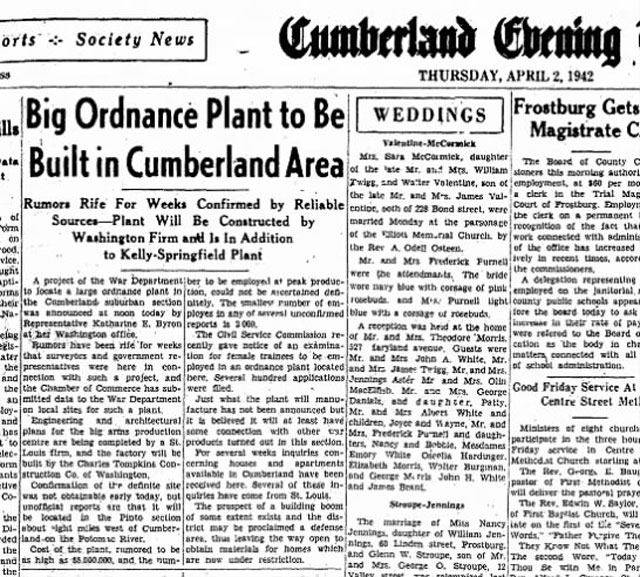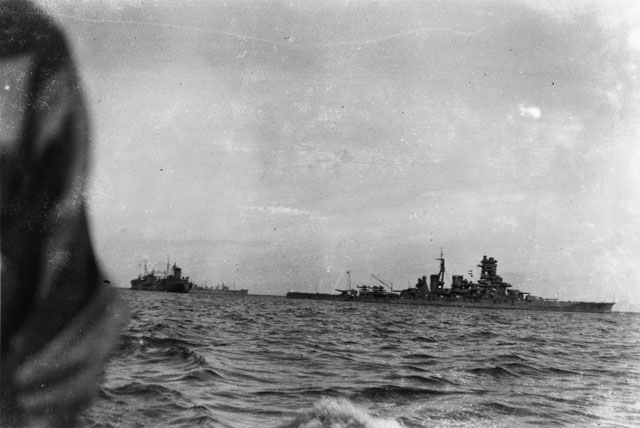Thursday 2 April 1942
 |
| Soviet troops attacking along the southern front, 2 April 1942. |
The Japanese continue attacking in Burma. Today, they force the British to abandon Prome.
 |
| B-25s parked on USS Hornet as it leaves port, 2 April 1942 (US National Archives). |
Imperial Japanese Navy submarine I-6 torpedoes and sinks British 5971-ton freighter Clan Ross in the Arabian Sea about 300 miles southwest of Bombay. There are 11 deaths. Clan Ross had survived a torpedo strike in May 1918 from U-boat UB-48 (Kapitänleutnant Wolfgang Steinbauer).
US Navy aircraft carrier USS Hornet departs at 08:48 from Naval Station Alameda (San Francisco Bay) along with naval Task Force 18. On the Hornet's flight deck are 16 modified B-25 Mitchell bombers, an unusual sight. The mission is unknown to all but a select few people. This is the first step of the Doolittle Raid on Tokyo.
27 March 1942. The Finns then turn the island over to German forces, who maintain control until 1944. Incidentally, these islands remain strategically important in the 21st Century, with the Russian military building a helicopter base on Gogland, which is 35 miles south of Kotka.
The Luftwaffe has been reinforced in the Crimea region to aid General Manstein's 11th Army. The planes continue their raids throughout the Black Sea region. Today, they sink 4629-ton Soviet tanker MV Valerian Kuybyshev at Novorossisk, which is fully loaded with gasoline and diesel fuel. There are 24 dead and 32 survivors. The Luftwaffe also bombs the Soviet port and supply base at Kerch. The Soviet supply situation is in chaos because of these attacks and temporarily ceases offensive operations on the Crimea.
 |
| A newsstand in Hollywood, California, ca. 2 April 1942 (Pantages Theater in the background). |
During the raid on Le Havre, the RAF planes sink German trawler V 1515 Rothienbaum, which is being used as a Vorpostenboot (outpost/Flak ship). The trawler later is raised and repaired and returned to service as M 3857 Rothienbaum.
 |
| "An invasion barge (R-boat) at high speed." This photo was taken on 2 April 1942 aboard HMS Iris off Toward Point, Strathclyde, Scotland (© IWM A 8328). |
Belgian 68-ton fishing trawler FV Marie Roberts suffers an explosion when it picks up a mine in its fishing nets. The crew abandons ship in good order before the ship sinks.
US fishing trawler Osceola sinks off Cape Cod, apparently due to the weather or mechanical issues.
Battle of the Mediterranean: Heavy Luftwaffe air raids on Malta continue. At around 10:10, Junkers Ju 88s hit the Dockyard and Submarine Base. Seven men are killed at the Army Pay Office at Villa Rosa, St. George's Bay.
 |
| Tanker SS Tiger sinking in the Chesapeake Bay after being torpedoed on 1 April and taken under tow, 2 April 1942 (US Naval History and Heritage Command 80-G-177202) (see 1 April 1942 for details). |
US/Chinese Relations: Chinese leader Chiang Kai-Shek appoints General Lo Cho-Ying as US Lieutenant General Joseph Stillwell's executive officer. Stillwell has been complaining to Chiang that Chinese generals in Burma have not been following his orders even though Stillwell officially is Chief of Staff of the Chinese Army. Stillwell and Cho-Ying then head back to the Burma front where Chinese troops have become the heart of the Allied defense.
US Military: Task Force 39 (TF 39) arrives in Scapa Flow, Orkney Islands. This large force includes battleship USS Washington (BB 56), the aircraft carrier Wasp (CV-7), and heavy cruisers Tuscaloosa and Wichita along with eight destroyers. This is the first major US naval presence in Europe.
 |
| Japanese-Peruvians being taken from the Panama Canal Zone to the United States for internment, 2 April 1942. |
American Homefront: Paramount Pictures releases "My Favorite Blonde," a comedy directed by Sidney Lanfield and starring Bob Hope and Madeleine Carroll. Bing Crosby also makes a cameo appearance.
Future History: Claude Russell Bridges is born in Lawton, Oklahoma. He develops an interest in music and forms a group, the Fencemen. Because he is underage, Claude adopts the name Leon Russell to get into nightclubs and perform, and the name sticks. He becomes a top session musician during the 1960s and later a renowned songwriter and recording artist. Leon Russell passes away on 13 November 2016.
 |
| The 2 April 1942 Cumberland (Maryland) Evening Times headlines that a "big ordnance plant" will be built there shortly. Similar headlines are seen across the country during 1942. |
April 1942
April 1, 1942: Convoys Come to the USAApril 2, 1942: Doolittle Raiders Leave Port
April 3, 1942: Japanese Attack in Bataan
April 4, 1942: Luftwaffe Attacks Kronstadt
April 5, 1942: Japanese Easter Sunday Raid on Ceylon
April 6, 1942: Japanese Devastation In Bay of Bengal
April 7, 1942: Valletta, Malta, Destroyed
April 8, 1942: US Bataan Defenses Collapse
April 9, 1942: US Defeat in Bataan
April 10, 1942: The Bataan Death March
April 11, 1942: The Sea War Heats Up
April 12, 1942: Essen Raids Conclude Dismally
April 13, 1942: Convoy QP-10 Destruction
April 14, 1942: Demyansk Breakout Attempt
April 15, 1942: Sobibor Extermination Camp Opens
April 16, 1942: Oil Field Ablaze in Burma
April 17, 1942: The Disastrous Augsburg Raid
April 18, 1942: The Doolittle Raid bombs Japan
April 19, 1942: British in Burma Escape
April 20, 1942: The Operation Calendar Disaster
April 21, 1942: Germans Relieve Demyansk

No comments:
Post a Comment